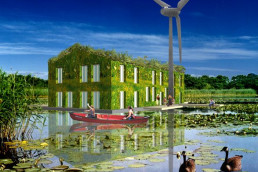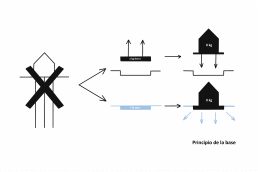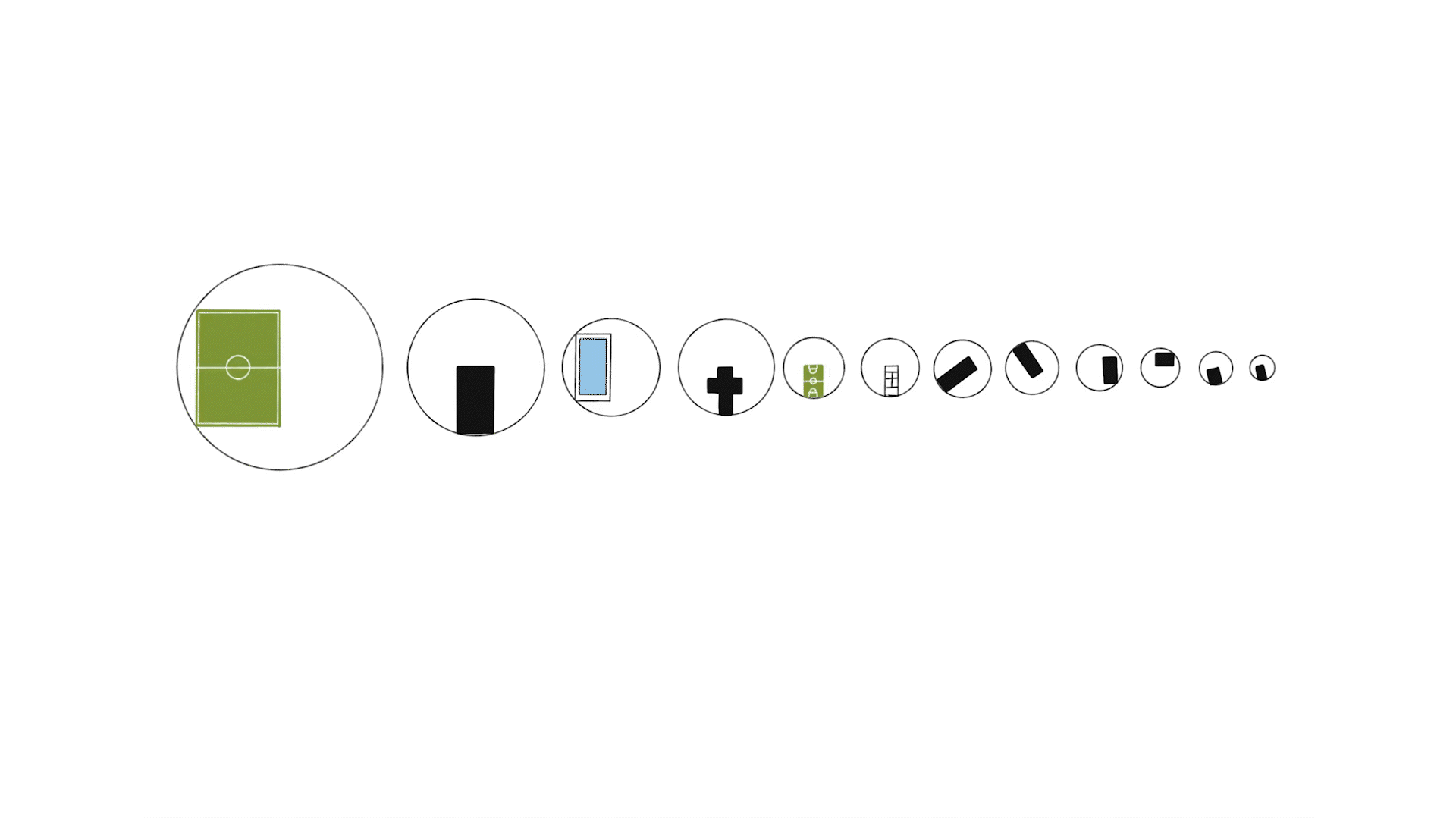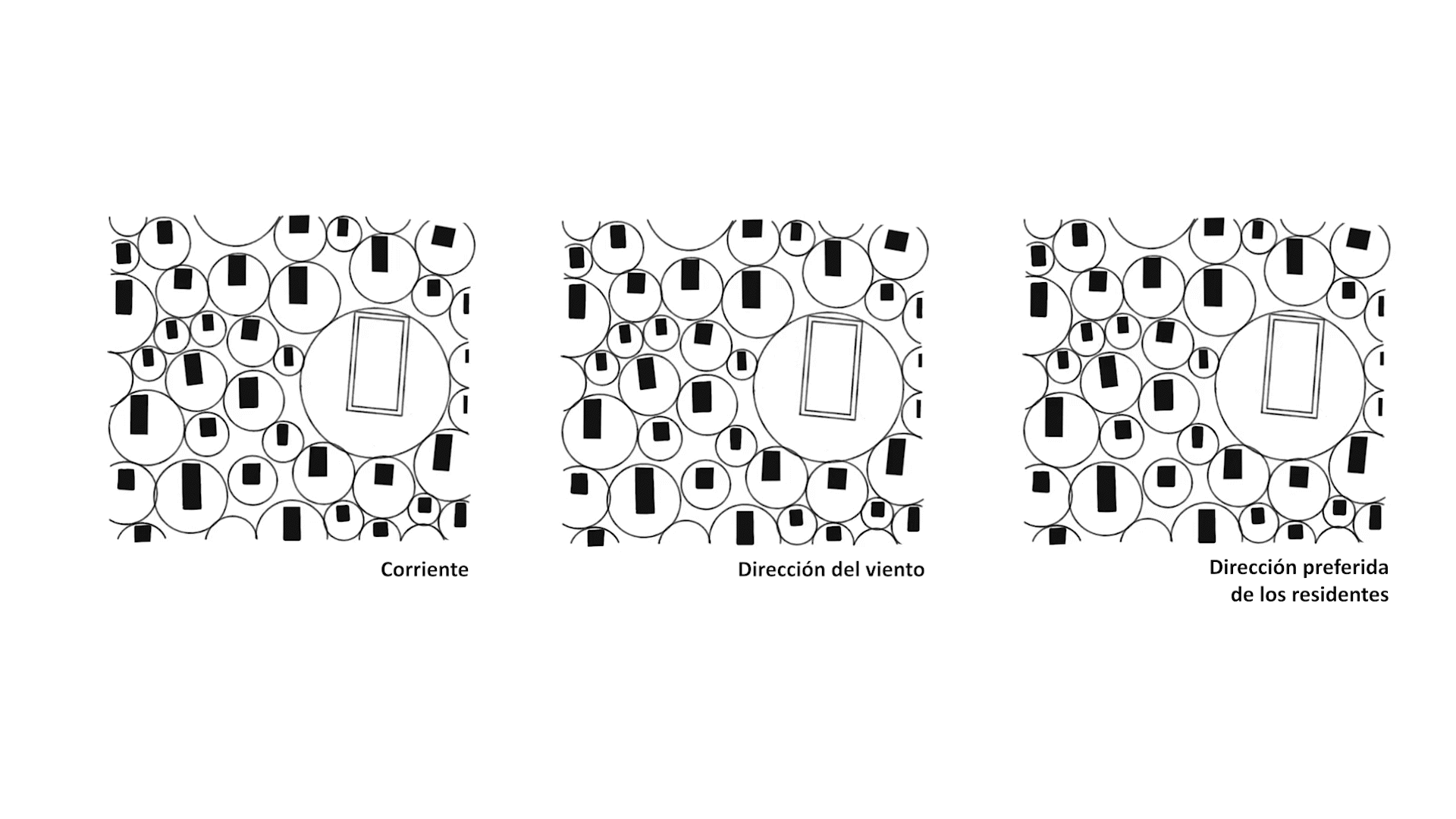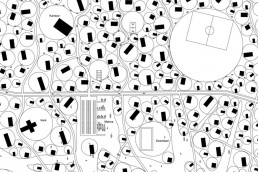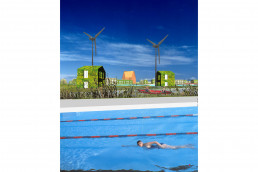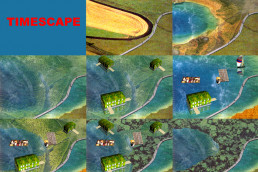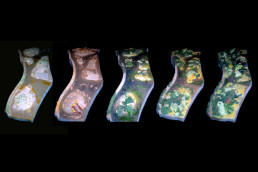WETLAND
How to live with water and not against it? How to understand water as an opportunity rather than a constraint? How to carry out an urban action, minimising material and infrastructure costs and maintaining the quality of the existing landscape? How to plan a neighbourhood in a water area that will be able to regenerate itself in the future and become a natural landscape again? These were the questions that guided the research process.
Wetland is a study on the combination of wet landscapes with different water tables representative of the Dutch terrain: the polder with a water table 30 cm above ground level; the area before the dike, which is flooded twice a year; and the creek area, which remains under water twice a day. The study does not propose containment against water or the natural environment, but rather the collaboration of the human settlement with them.
The starting premise of this new urban landscape is to achieve the maximum adaptation of Wetland to the movements of the water. This is based on Archimedes’ theorem. This universal principle allows us to avoid the costly pile foundations and sand fillings typical of Dutch architecture, allowing us to build even on permanently wet ground.
We have moved away from the typology of floating dwellings moored to a pier, to propose «loose» elements in the landscape anchored to a single point. In this way we managed to give the dwelling or equipment a freedom of movement within a turning radius determined by the size of the element itself. This movement can be free according to the current or the wind, or voluntary according to the best views, the orientation or simply according to the owner’s taste, who will fix his house at a certain point. Thus, each element creates its own circular plot, large empty spaces, so that the house has its own garden, the school its own courtyard, the church its own square… etc.
In conclusion, living in Wetland is synonymous with adaptability and autonomy: the houses are orientated, mobility depends on the landscape and the time of day, each unit generates its own energy and purifies its own grey and black water. In this way, the wetland is transformed into an Urban Archipelago, a new habitat, where water has been taken as a starting point.
Name:
WETLAND
Typology:
Urban planning / R&D / International Competition
Location:
Zuid Holland
Year:
2000
Research:
Planeamiento urbano y Regeneración
Competition:
1er Place
Developer:
Provincie Zuid-Holland
Team:
Tom Mossel, Esther Gonzalez Aurignac, Engineering: Bert Fraza


